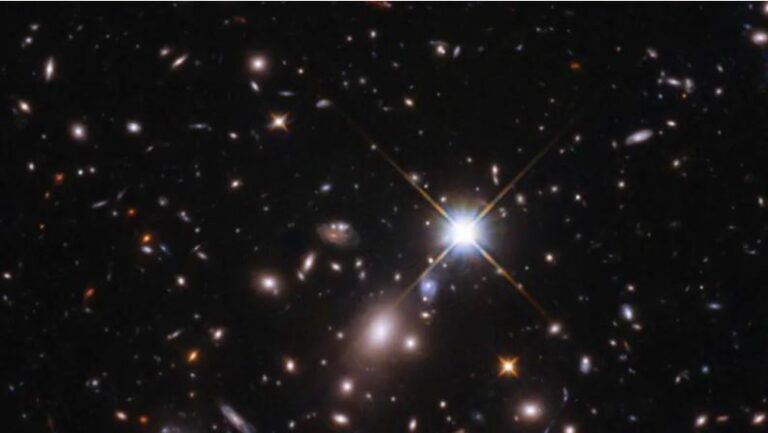The most distant star — or possibly pair of stars — that astronomers have ever seen was just revealed thanks to the Hubble telescope and a massive cluster of galaxies. Far from Earth, the universe bends around the vast bulk of a galaxy cluster, creating a gravitational lens in spacetime much like the curved lens in a magnifying glass. Like a magnifying glass, it revealed something small and hidden: a star system from the early universe.
The far-away star system takes the official name WHL0137-LS, but the astronomers who found it nicknamed it “Earendel” from the Old English word meaning “morning star” or “rising light.”
Earendel system as we’re seeing it today was shining within just 900 million years of the Big Bang, according to the authors of a new paper in the journal Nature describing the discovery. Fully 12.8 billion years passed before that light reached the Hubble Space Telescope, magnified by a lucky trick of gravity to appear as a tiny smudge of photons on Hubble’s image sensor. Earendel is 8.2 billion years older than the Sun and Earth and 12.1 billion years older than our planet’s first animals.
Even by the standards of ancient stars, Earendel stands out: astronomers observed the previous record holder, nicknamed Icarus, as it appeared 9.4 billion years ago — 3.4 billion years more recently than this new record-holder. Even the oldest known supernovas, usually the brightest and most easily-spotted individual objects across the immensity of spacetime, are younger than Earendel.
source theverge.com
Ask me anything
Explore related questions





